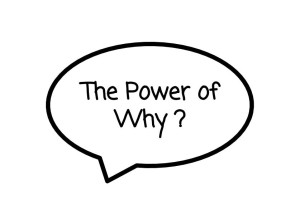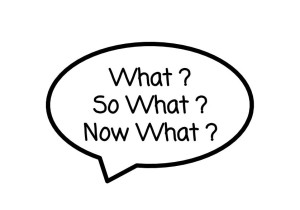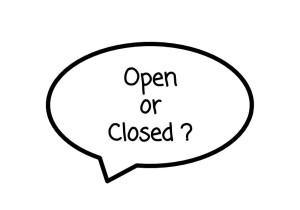When new evaluation models hit New Jersey into 2012, educators all across the state were forced to begin to look at their own practice. Many teachers and administrators started to think about the reasons why they were doing certain things in the classroom. More focus was placed on several important areas including meaningful student engagement and the questioning techniques that teachers were using. When I work with teachers, questioning often comes up as an area where many teachers can augment their instruction. For those seeking to become better practitioners, it is important to improve your skills as a questioner.
While developing skills in asking good questions is an important skill for teachers to master, it is also essential to help students learn to develop their own questions. When students can develop their own questions, they will be more engaged in the learning process. Providing opportunities for students to question content, create their own learning based on those questions, and find their own answers allows students to demonstrate higher order thinking and deep intellectual engagement.
Several simple structures and frameworks can be implemented in the classroom in order to develop your own questioning skills as well as those of students.
The most important question a teacher can ask in a math classroom is WHY. Asking why forces students to process their learning and demonstrate their thinking. I can call on a student to provide an answer to 24 x 17. When a student gives the answer of 408, the follow up question of why always comes next. Students must then explain their answer. They must provide steps for how they solved the problem or explain a pattern they noticed in the solution. This forces students to demonstrate both procedural and conceptual understanding. While a simple questioning technique to implement, the question of why can reap huge benefits in the classroom, as students begin to internalize the need to explain their thinking and problem solutions.
Provide opportunities for Ss to apply their learning. Generally speaking, most classrooms see a high percentage of low level questions being asked. While higher order questions are asked, it usually occurs less frequently. A simple set of 3 questions can help. What, So What, Now What is a structure that allows for application of knowledge. Asking WHAT gives students a chance to describe something; provide an answer that states a fact or a simple piece of information. Asking students SO WHAT gives students a chance to interpret information; to take an answer or multiple answers and come to a conclusion about the information. Finally, asking NOW WHAT provides an opportunity for students to apply their thinking. Students must then process their thinking, making connections between concepts or content areas, or applying learning to their own experiences.
Kelly Gallagher suggests a process to help students improve their writing known as the Question Flood. Using this strategy, a student will read a peer’s writing piece, and write down all of the questions that come to mind when reading the text. This makes the writer reconsider a writing piece as a result of the questions that might be unanswered. This strategy can also work in other content areas and contexts. When students are reading a non-fiction selection for the first time, have them generate a list of questions that they have while reading the piece. The question list can then provide an additional research opportunity for students. Provide students with a learning goal or topic for the day, and then give them 1-2 minutes to generate as many questions about the topic as they can. Modeling the utilization of question stems can help students to produce their own questions.
Consider the questions that you utilize with your students. Questions can be classified as closed, those questions that have a fixed answer or answers, and open, those questions that can be answered with a variety of possible answers or solutions. Prior to a lesson, consider the number of open and closed questions that you will ask. Script several open questions that apply to your lesson. Try to finish your lesson with an open question; this will give students the chance to apply their thinking at the conclusion of a learning experience. Explain the difference between open and closed questions to students, then encourage students to generate their own open questions at the end of a lesson.
If we want students to ask good questions, we must teach them how to ask questions. In a recent online article from Educational Leadership, Dan Rothstein and Luz Santana share a protocol known as the Question Formulation Technique (http://www.ascd.org/publications/educational-leadership/oct14/vol72/num02/The-Right-Questions.aspx). This framework can provide students an opportunity to develop their own questions, refine those questions, and then utilize those questions to guide research and inquiry. Students are expected to write down as many questions as they can, without providing answers, while changing any statements into questions. Once students have generated a list of questions, they prioritize their questions to prepare for topic research. The most important step, however, is having students reflect upon the whole process. This metacognitive processing helps students to refine their questioning over time.
The questions that we utilize in class can help to spark student creativity and thinking. Asking the right questions can encourage students to process their thinking and learning, and help them to generate their own questions. In the comments section below, I invite you to share your experiences trying the above strategies or share the questioning strategies that you have found to be successful in your class. Let’s share and learn from each other to continue to improve questioning in our classrooms.
By Rich Czyz @RACzyz
References
Kelly Gallagher. Write Like This. Stenhouse Publishers. 2011
Dan Rothstein and Luz Santana. The Right Questions. Educational Leadership. October 2014






